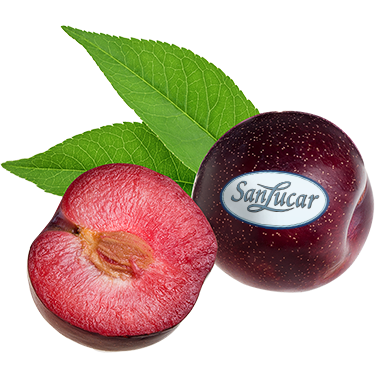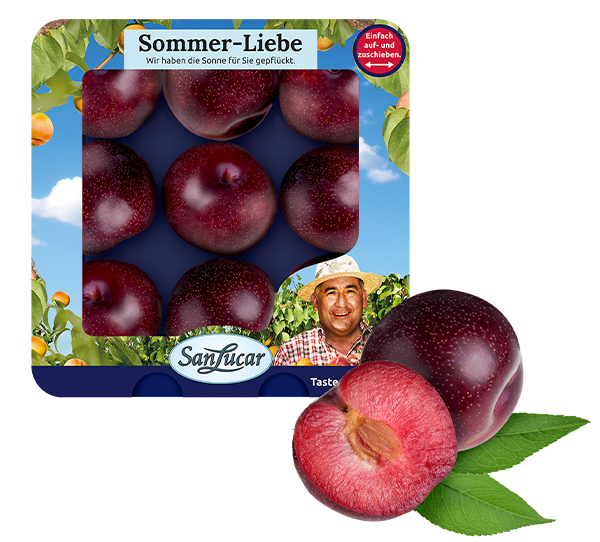
Ein sonnensüßer Pflaumenschmaus.
Through the summer with the sugar plum.
Master grower Estela Villalta rose with the sun today to check on her sweet little fruits on the plantation. The Villaltas have been growing plums in the water-blessed Spanish region of Extremadura, which borders Portugal to the south-west, for 40 years.

“Their intense red to purple colour alone is beautiful and they also taste wonderfully refreshing and sweet. That’s why we call them sugar plums.” We have selected Sugar plums from thousands of varieties. “When selecting a variety like this, it is important that the plants and fruits are perfectly adapted to the climate and soil,” explains Estela.
Our sweet summer messengers ripen from early summer to autumn. When the sugar content is perfect, they are picked very carefully by hand. In general, careful handling of the fruit, nature and our employees is very important to us. For example, we set up beehives at blossom time and use natural predators against pests. “We want to give something back to nature, which gives us such rich gifts every day,” says Estela, biting into a sugar plum and smiling. Yes, only the fruits of a great passion taste this sweet.

Good to know
They ripen at room temperature. They can be kept in the fridge for up to one and a half weeks.
More interesting factsabout plums
Tips and special features
Plums are low in calories and contain no saturated fatty acids. Their dewy white film on the skin is a natural protection. It keeps the fruit from drying out and is a sign of freshness. Externally, plums differ from damsons by their pronounced fruit seam and roundish shape. Plums, on the other hand, are more elongated and have a firm flesh that does not fall apart during cooking and baking.

Nutritional information
| Vitamin A (mg/100 g) | 0.4 mg |
| Vitamin B (mg/100g) | 1.2 mg |
| Vitamin C (mg/100 g) | 5.4 mg |
| Vitamin E (mg/100 g) | 1.7 mg |
| Potassium (mg/100 g) | 161 mg |
| Calorific values: Energy | 45 kcal |
| Fett thereof |
0.2 g |
| Monounsaturated fatty acids | |
| Polyunsaturated fatty acids | |
| Carbonhydrates | 10.2 g |
| of which sugar | 7.8 g |
| Protein | 0.6 g |
| Salt | 2 g |
| © German Food Code 3.02 |
History
Plums were first mentioned in the writings and songs of Confucius in 479 BC and occupied an important place as a food in Chinese culture.
In 65 BC, Pompey Magnus introduced plums to the orchards of Rome, and under Alexander the Great they finally reached the Mediterranean region.
Country of origin
From spring to autumn, they are grown for example in Spain and Italy for SanLucar, in late summer, in Germany, too, because the climate and the soils are ideal here.
Storage
When stored in the vegetable compartment, they remain fresh for a period of about one week, they develop their full flavor at room temperature, where they keep about two days.
Ripe plums can be recognized by the fact that they have a perfect coloration typical of the variety.
Taste in harmony with people and nature
We use our modern, digitally controlled water management system to save water, always rely on natural predators first when dealing with pests and protect the bees.
More about our social responsibility


